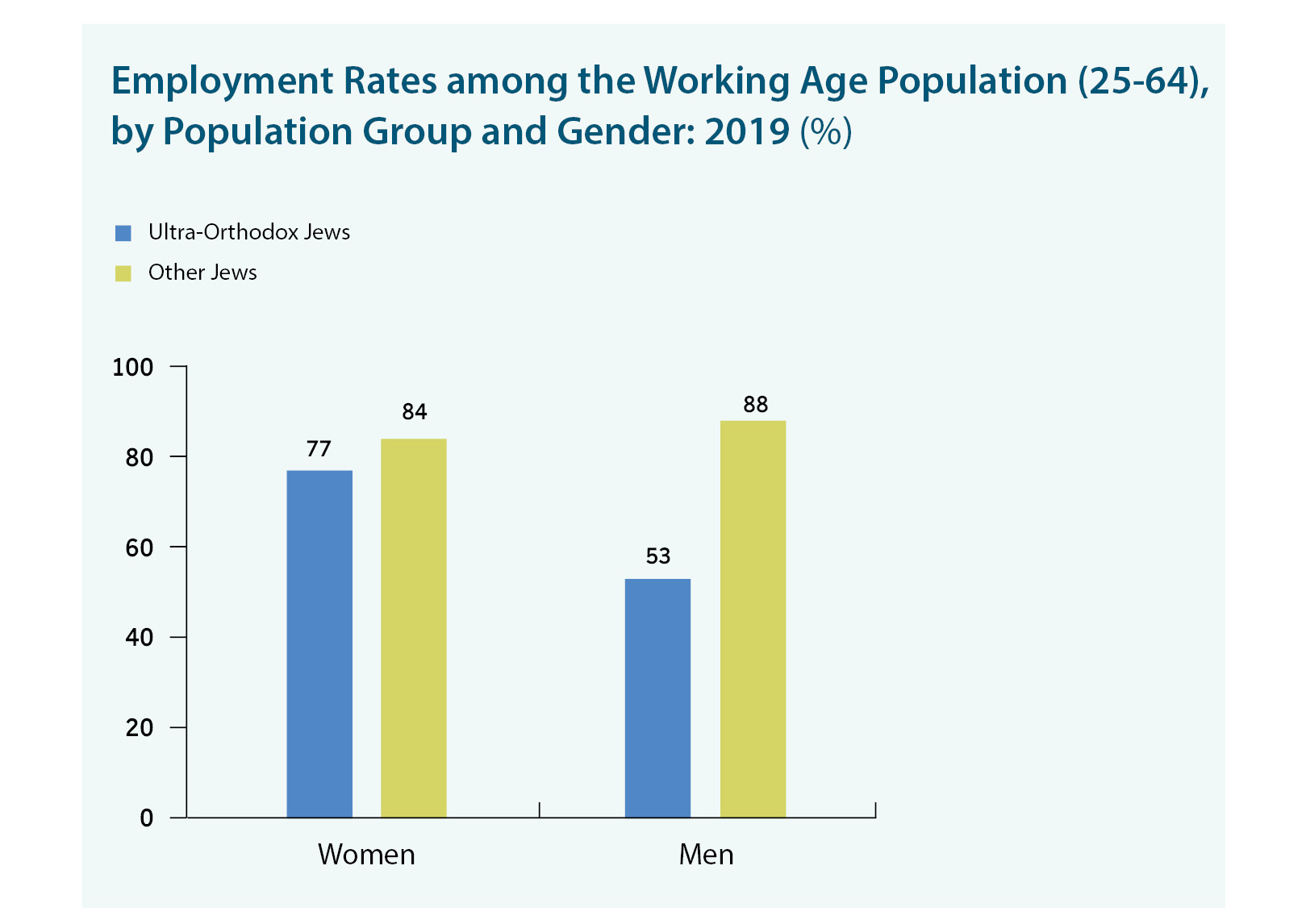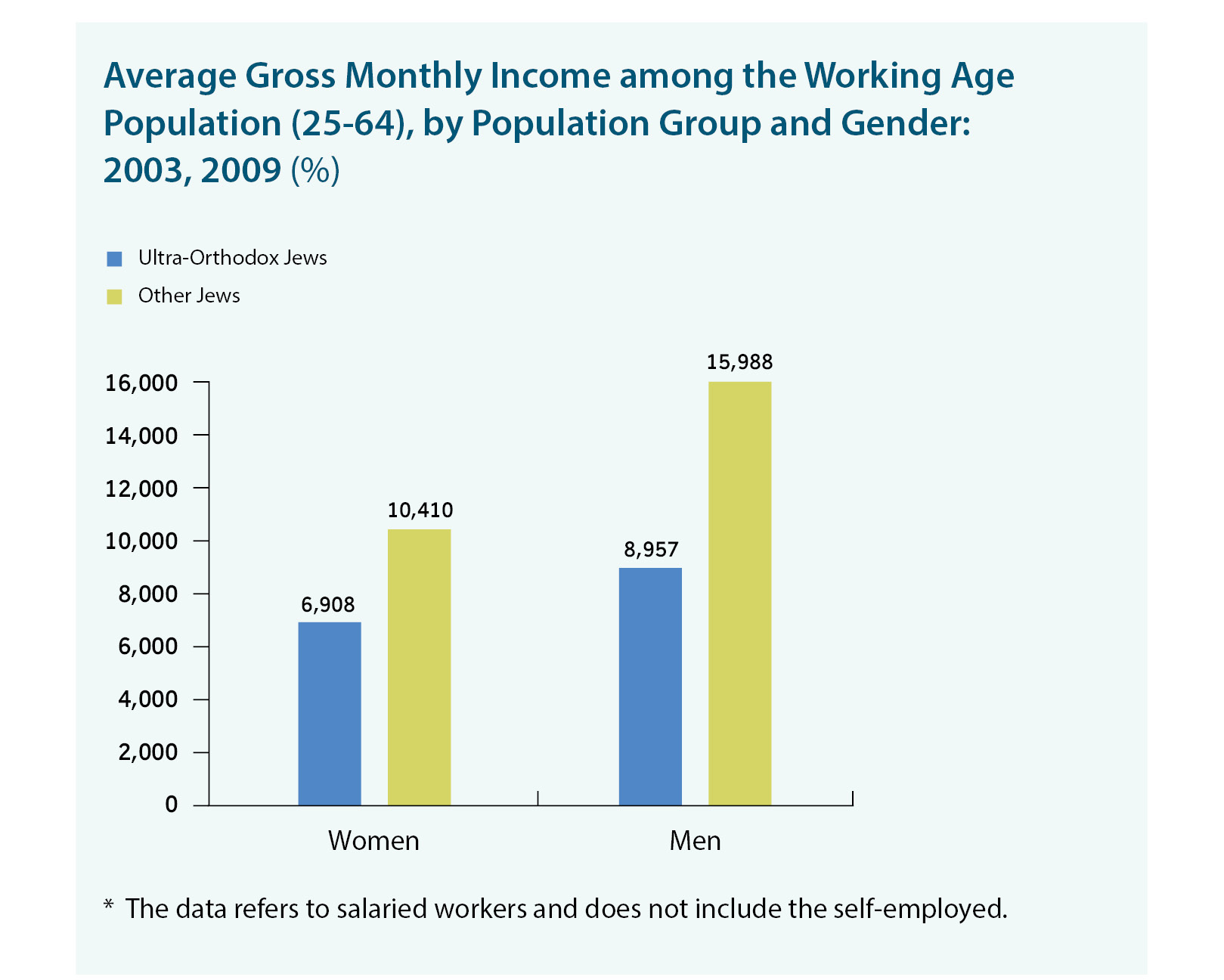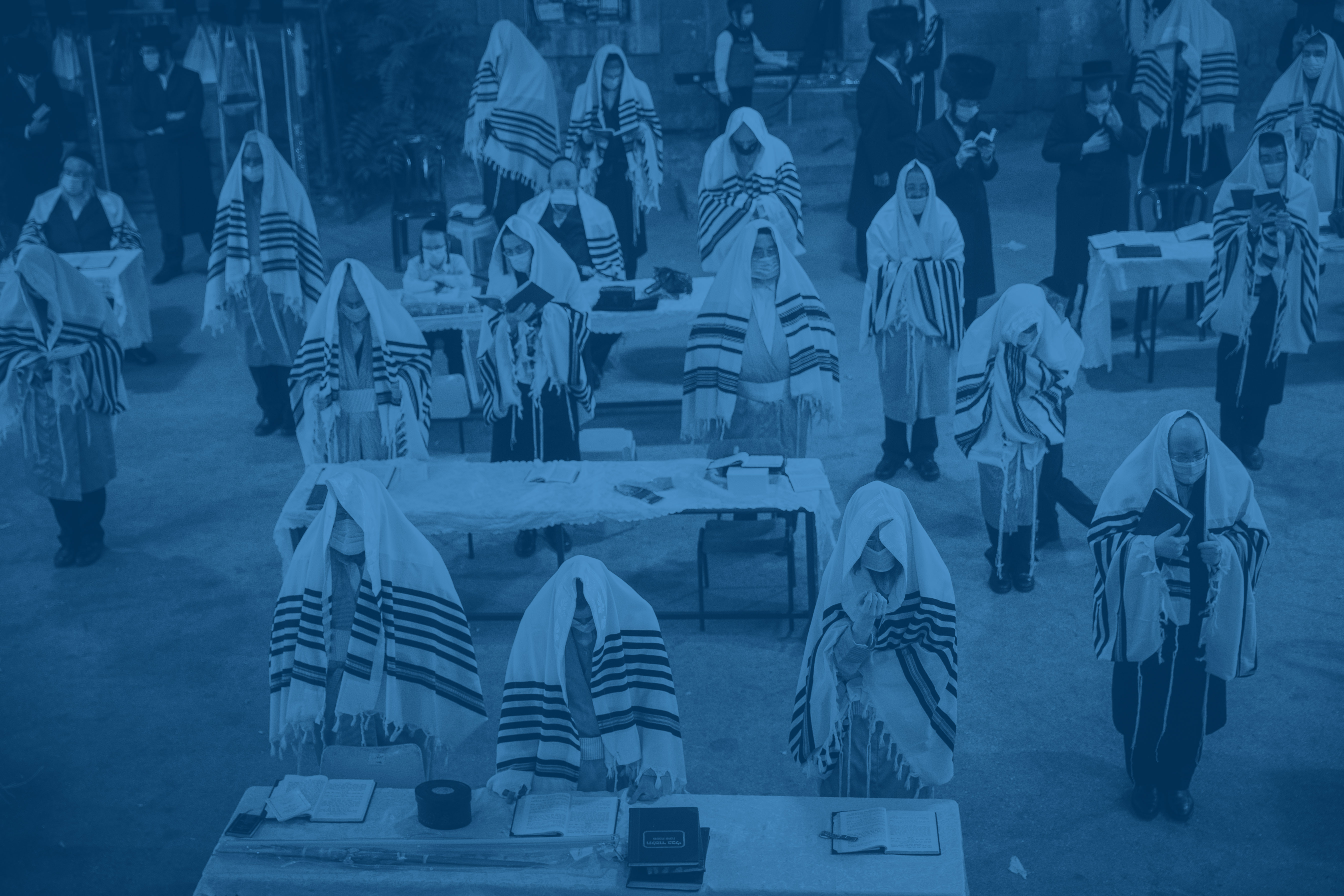Employment
Chap. 4
Employment Rates
A combination of pressing economic needs and government policies aimed at supporting the entry of the ultra-Orthodox into the labor force led to a major change in ultra-Orthodox employment rates between 2003 and 2019, among both men and women. Consequently, more than 50% of ultra-Orthodox men aged 25–64 are currently employed, as are 77% of ultra-Orthodox women in the same age group.
The impressive rise in employment rates over several years was halted in 2015. Since that time, there has been no change in employment rates among ultra-Orthodox men, though employment rates for women have continued to rise. It is possible that the stagnation in male employment rates is a result of the coalition agreements signed by the government that was formed in 2015, which led to a reduction in incentives for ultra-Orthodox men to enter the workforce and to an increase in financial support for yeshiva and kollel students.

Income from employment
Clearly, a significant aspect of e employment is income. The average income for ultra-Orthodox workers in 2018 stood at 59% of the average income of other Jewish workers. For ultra-Orthodox men, the low level of income can be attributed mostly to low hourly wages (67% of the hourly wages for other Jewish men), but also to fewer hours on the job (84% of the hours worked by other Jewish men). Among ultra-Orthodox women, relatively low income can be attributed mostly to fewer hours on the job (77% of the hours worked by other Jewish women), but the gap is smaller than among men: On the average, ultra-Orthodox women earn 85% of the earnings of other Jewish women.
In addition, most of the ultra-Orthodox population is employed in fields with lower pay, for example-- in education, and are significantly under-represented in industry and hi-tech. However, recent years have seen a drop in the percentage of ultra-Orthodox Israelis working in education, and an increase in their employment in various industries. If this trend continues, it will impact on per capita income in ultra-Orthodox society, and consequently, on the standard of living of ultra-Orthodox households.














